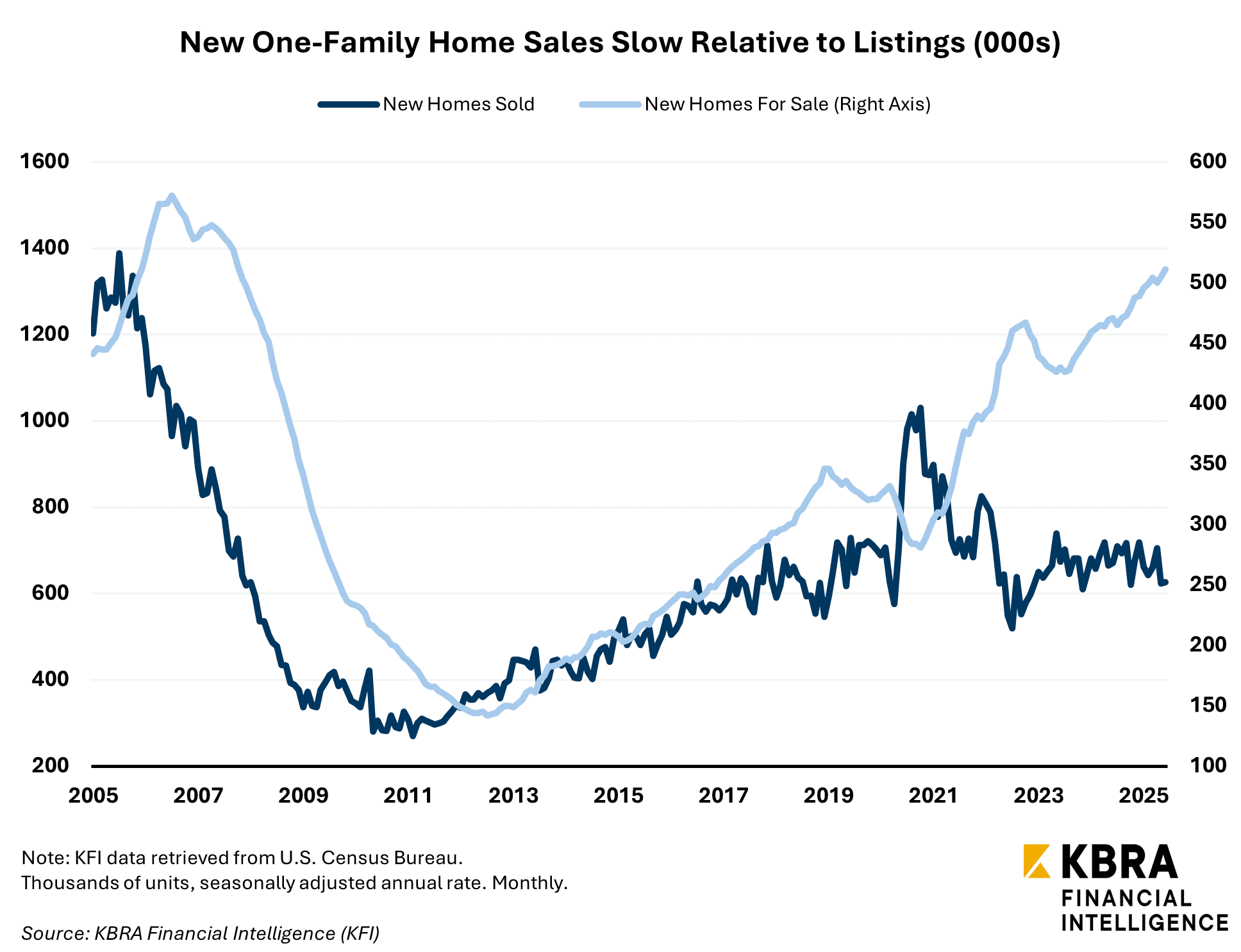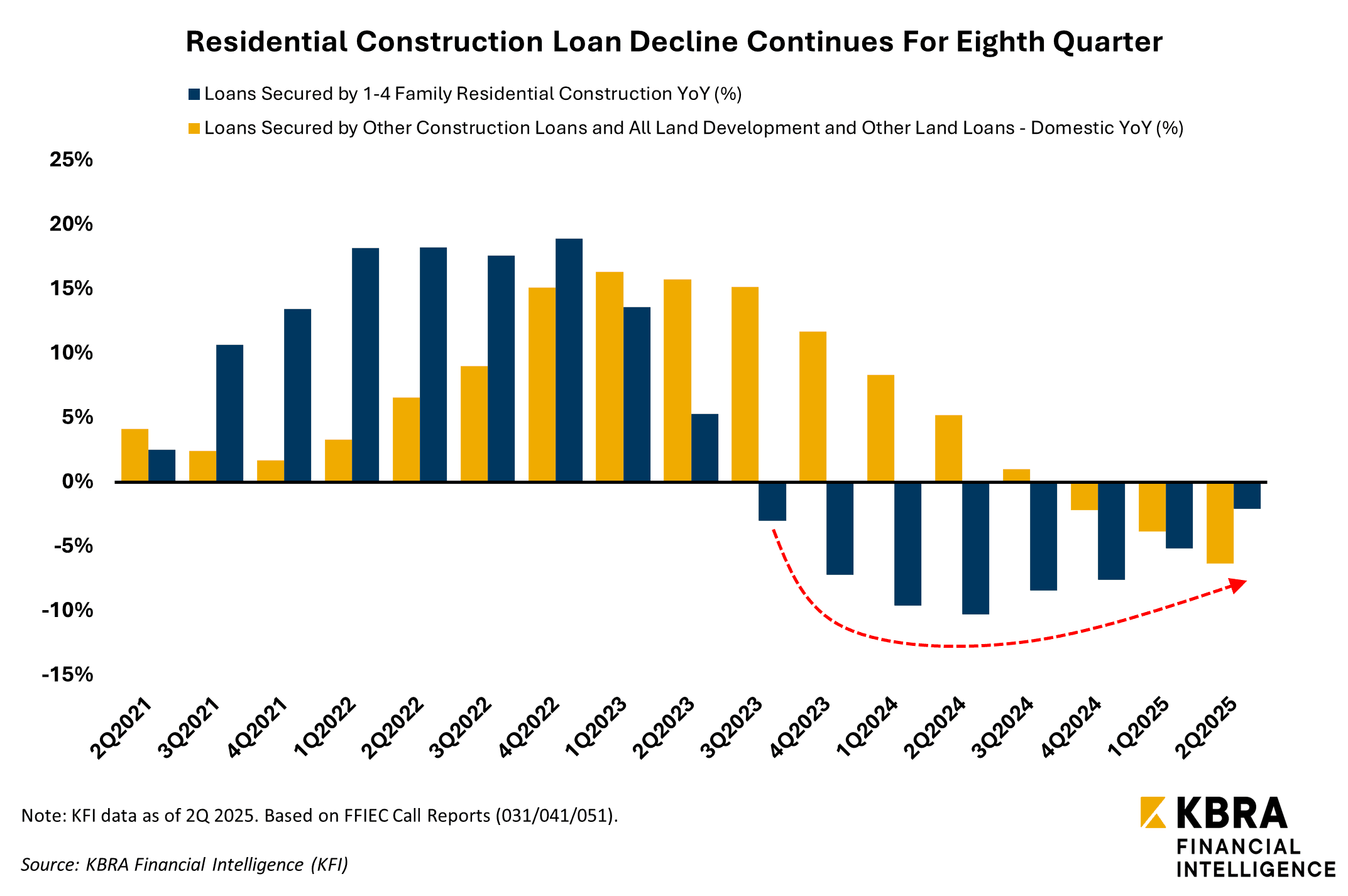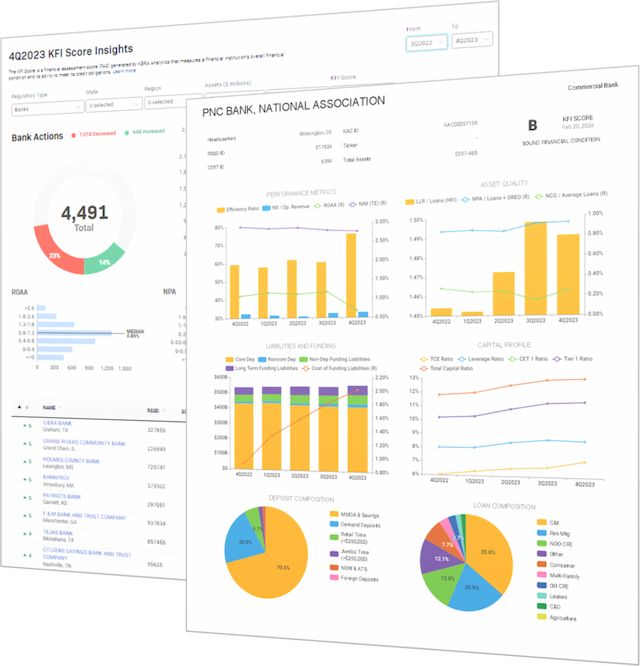KBRA Financial Intelligence
Homebuilders May Be Hitting the Brakes on Construction Pace
By KFI Staff
An ongoing slowdown in the growth of U.S. new home sales has coincided with a simultaneous stalling of homebuilder completions, which tumbled to a nearly 3.5-year low in the latest month of data. The sentiment of homebuilders surveyed by the National Association of Homebuilders (NAHB)/Wells Fargo Housing Market Index (HMI) slipped to 32 in June, the index’s lowest point since 2022, rebounding only slightly to 33 in July. Readings below the index’s breakeven level of 50 represent negative sentiment and may signal that emerging stagnation in new residential construction may continue.

The slide in homebuilder completions comes as single-family construction starts hit a 2025 low, yet the number of new homes listed for sale continues to climb and recently reached levels not seen since 2007. There are now only 1.2 new homes selling in an annualized period for each home listing on the market today, which marks the thinnest ratio in almost three years. This implies that demand is slowing relative to the flow of supply, which could threaten the pace of price growth. The Federal Housing Finance Agency’s (FHFA) home purchase price index has already shown signs of weakening, posting month-over-month price declines throughout the past two months of data. The softening of price gains would be particularly concerning for builders, as cost pressures may soon ratchet up amid ongoing tariff implementation.
Earlier this year, KFI noted that home construction activity may eventually face headwinds due to tariffs, noting that U.S. builders import a significant sum of key materials from North American trade partners Canada and Mexico. Although several large builders, including PulteGroup and D.R. Horton, have noted that tariffs have yet to heavily impact their businesses, the impending implementation of new duties on imported goods, such as lumber and copper, could make these costs more palpable in the industry.

Call report data indicates that U.S. commercial banks have collectively experienced a year-over-year decline in loans secured by one- to four-family residential construction projects for eight consecutive quarters. After a prolonged softening of growth, other construction and land development loans have also receded alongside residential construction lending. The recent drop in this lending category marked the first decline in 11 years. The average delinquency rate impacting construction and development loans among U.S. commercial banks was 1.67% in 2Q 2025 – up 33 bps from the same quarter a year ago.
